The #1 Technique to Swiftly Increase Your Fanbase

The number one problem I encounter time and time again with musicians is: Creating music comes naturally. Marketing, self-promotion and business do not. Bands want to focus solely on creating music and I speak to many artists who flat out refuse to do more than the bare minimum amount of marketing. The problem is they are not having the same amount of success as my artists who spend time focusing on growing their fanbase and communicating with them regularly.
Content may be King. But, Marketing is Queen
There is no one coming to rescue you from the downward spiral that the industry is facing at this very moment. It is up to you to empower yourself to succeed. In this issue of Sound Advice I will give away the #1 secret I have seen that really works for meaningfully building a fanbase.
This issue is a long one because I wanted to tell the story that prompted it – to skip to the meat of this article and learn my #1 technique for building your fanbase, scroll down to the section that says: 1% OF EVERY LIST BUYS
THE BACKSTORY: THE BAND WHO CAME TO MY OFFICE LAST WEEK
Last week, a client (whose band name will remain unnamed) who I have been working with for more than 4 months wanted to take a meeting to go over the progress of their CYBER PR campaign. Four months ago they came in and I explained my theory of how to combine social networking with fan building and Internet marketing to make more fans – and in the long run, more money. They sat through the meeting and they took notes and went away with a laundry list of things to do in conjunction with their campaign.
Fast forward to now, and we were having almost the exact same conversation. Again, I explained the ways they can improve their online reach. I showed them all the sites and techniques. I swivel my chair around and there they are they staring at me blank-faced and cross-eyed from the amount of information I’ve just bombarded them with.
Musician: “So now that we have a new album coming out, how can we get some real traction for it?”
Me: “So, you just spent hard earned money on four months worth of a campaign with me and you did not implement any of the key points and advice?”
I wanted to grab them by the shoulders and shake them: Why did you hire me? Why did you sign up and spend money on a campaign that you did not put any work into? Instead, I took a deep breath.
They sheepishly admit that they’ve checked out all of the advice that I’ve given them, but they have not actually followed any of it.
Musician: “We spend our time thinking about song structure and lyric writing.”
Me (exasperated): “I know you do, but now you need to focus on expanding your fanbase. So, How many people are on your mailing list?”
Musician: “300.”
I have just discovered this bands #1 problem, and I am pretty sure that their website is at the root.
Me: “Let’s go look at your website”
THE BAD NEWS ABOUT MAKING AN IMPACT AS A MUSICIAN IN 2008: MEANINGFUL FANBASE BUILDING TAKES TIME
Building a community of fans to rally around you and support you and interacting with them in a meaningful and connected way is both labor intensive and time consuming.
In fan building and social media (much like in the music business) you cannot jump to the front of the line. To make it today as a musician (I don’t care if you are independent and totally DIY or signed to a major label) you must focus on building your fan base.
This band is in a great position and has received more attention than many independent artists. Their song has recently been featured as the theme song for a popular TV series and they are prominently featured in the credits. As a result, they are getting a good amount of traffic to their website, approx. 100 people a day.
I log onto their website and here is what I see: the top one third of the screen (which is the most important real estate on any website) is the name of the band and their logo in very large letters. Below that was a quote from Jimi Hendrix.
I scroll down to the next 1/3 of the page and below the Hendrix quote it finally says that their song is featured on the TV series.
Me: “Where can I sign up for your mailing list and how can I get this song?”
Band: ” Keep scrolling down.”
I scroll down and finally see a link to their MySpace page where the hit song is available for streaming. I keep scrolling and I can finally see the tiny box that says: Sign Up For Our Mailing List.
Me: “Why is there a quote from Jimi Hendrix?”
Band: “Because we love Hendrix and we think it looks cool.”
Here is how this band was totally ripping themselves off and the way they can totally turn this around to swiftly build a larger newsletter list – and subsequently a larger fanbase).
One hundred people coming to their site each day is a lot of potential new fans. The problem is each visitor was going straight to the link to the song they were interested in, streaming it from MySpace and going away never to return again.
This band was not taking advantage of their situation at all because the moment an interested potential fan landed on their site they were looking at a huge logo and a quote from Hendrix; neither of these two things address what a visitor wants when he comes to a website. People are totally self-motivated. When a visitor comes to any website he is thinking one thing: What’s in it for ME?
Problem: The band was wasting prime real estate (the top 1/3 of their home page) and there was nothing in it for the fan who was clearly visiting the site to find the song from the TV series.
According to a Google study the average visitor will spend 3.5 seconds on your website before they click away so you MUST capture them quickly and offer them something!
If this band had announced at the very top of the website: “Hey! Enter your email address here and get a free MP3 of our new hit song from the TV show!” They would have instantly satisfied the fan by answering the ‘What’s in it for me”‘ question AND they would have been setting themselves up for the #1 most effective way I know for building a fanbase which is the first step towards making more money: Building Your Email List And Sending Effective Newsletters.
Statistically speaking, 1-3% of people off of any random mailing list will buy what you have to offer them. So if you and I created an email list right now and offered a widget for sale to 1,000 people, between 10 and 30 would actually buy it.
So, if my band had an average list , out of 300, between 3 and 9 of them would purchase an album or a single or an offering of some sort. This is not great news for them considering they would like to sell their new album to their fans.
The average percentage rate increases when you have rapport with your list and you communicate with them regularly and consistently. The list begins to know and trust you, and then feel more comfortable buying from you.
MEASURING RESPONSE IS CRUCIAL

Many artists rely on Facebook blasts and MySpace bulletins, which is a fine way to communicate with your fans. The problem with this is you don’t know what your open rates are. In other words, you don’t know how many people are actually reading your e-mails. I love many Web-based applications, and I strongly recommend that you use them. However, being in control of your own e-mail list lets you control the message and the money. If MySpace shuts down and Facebook changes their rules overnight, you won’t lose your precious contacts because you will be in control.
EMAIL MANAGEMENT SYSTEMS ARE KEY
A critical key to newsletters is, you must have an e-mail management system that tracks and measures results. If you are still using your regular email program by BCC’ing people, I beg you to stop now.
I suggest using ReverbNation’s free e-mail management program, which provides tracking. For a more customized experience I recommend bandletter.com. This is a service that I created with my business partner, Kevin. He will hold your hand through the entire process of creating your newsletter. He will also send it out for you, clean up the bad emails that bounce back, and remind you when to send out your communications. BandLetter is $29.97 a month and Kevin will design a beautiful newsletter that matches the look and feel of your website. I also like: Constant Contact and Aweber (these also cost approx $30 a month).
HOW TO STRUCTURE YOUR NEWSLETTERS
Once you have the email management program in place and you have imported your email address into it it’s time to write your newsletter. Here is how to do it so that you will engage your fans:
THE SUBJECT LINE
Keep your subject line short and sweet. Studies show that including the reader’s first name in the subject line grabs their attention and increases your open rate. There are many e-mail management programs like that can very easily insert first names right into the message.
THE BODY OF THE NEWSLETTER
PART 1: THE GREETING
You want to have something upbeat and a quick sentence or two that is relatable, short and sweet. Your subject line should be no more than 55 characters so people can read it without clicking. Here are some captivating words that will work:
Join me for…
Find out how…
(First name here), did you know that…
Subject lines like this will pique interest.
PART 2: TELL THE READER WHAT TO EXPECT
It’s a very good idea to let the reader know what will be included in each newsletter. So, if someone wants to only read the part that is interesting to him he knows where it will appear.
I structure my Sound Advice ezine newsletters like this:
1. First, I write: In This Issue:
2. I start with a quick summary of what I have been up to or some quick news (a few sentences).
3. The article’s topic with the title, which is the feature of my newsletter.
4. Where is Ariel? – This is where I list my upcoming engagements and invite people to join me for events and conferences.
5. A call to action, such as join me on Twitter, or Facebook buy my Music Success in 9 Weeks book, attend a conference, etc.
Here’s an example from a past Sound Advice:
In This Issue:
1. Update from New York City – Finally getting warm!
2. Where’s Ariel? Come Celebrate My Birthday with me in St. Louis!
3. Now Is Gone – A book every self-promoting musician should read!
4. Join me on Flickr!
PART 3: THE BODY OF THE NEWSLETTER = THE MEAT
TELL A STORY & HOOK THEM IN
The body of your newsletter is where you have a chance to shine and an opportunity to be totally different from the pack. Most bands make the mistake of just pimping themselves out on their newsletters – HEY FAN BUY MY STUFF! This is NOT the way to make people feel closer to you.
Some ideas are:
1. Notes from the road
2. Stories from the studio
3. Writing your next record – The process of writing new songs
4. Your vacation, your kids, your pets
5. Your day job. What you do when you are not making music
6. Reviews of bands you like
7. Topical: the election, the environment, etc.
The key here is to create something that will help your fans connect to you in a deeper way. People love stories so make it story-focused.
TIP: Keep gig lists short. If you have a long list of upcoming gigs, you don’t want it to take up the whole newsletter. Have a list of cities and dates and link to a full show list on your website or your MySpace. Use the ReverbNation show widget that lists all the show details that your fans can click to.
TIP: If you have a long article or thought stream, include just part of it in the newsletter and link to a website or blog where you include the remainder of the piece.
CALL TO ACTION:
At the bottom of your e-mail is a call to action. This is something that engages your reader to take action. For example:
1. Join me on MySpace, Twitter, Flickr, Utterz, or other social networking sites
2. Sign a friend up to my e-mail list and receive a special bonus
3. Vote for me on a website for a contest
4. Leave a comment on a site, via e-mail, on a blog etc.
TIP: Another great call to action is to use your newsletter to create an excuse to personally connect with your fans. Invite them to a bar, to another artist’s show, or for a game of pick-up football in the park. Something your fans will like, and in an environment where you can connect with them.
By closing your newsletter with a call to action, you are actually encouraging your fans to be closer to you. This allows them to become involved very easily and doesn’t leave your reader cold with the e-mail abruptly ending.
I hope these newsletter tips have helped. I would love to see yours – feel free to sign me up to your list at: Ariel@ArielPublicity.com and to get in touch with Kevin from BandLetter contact him at Kevin@BandLetter.com
BONUS: For my 5 top techniques for building your newsletter list please read this article http://arielpublicity.com/blog/archives/85

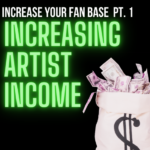
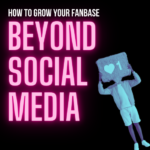
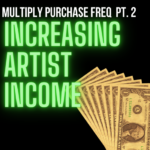
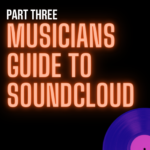
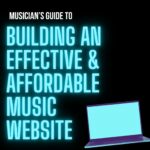
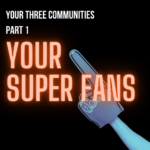




Once again… an excellent resource Ariel!!!!!! Thanks!
“I hope these newsletter tips have helped.
I would love to see yours – feel free to sign me up” said Ariel.
well alrighty then! 🙂 enjoy ~T
Thanks!
Great info. Creating a newsletter would be next thing for our band’s website.
=)
Thank you again! Your advice is always useful, but we’re actually redesigning our website at the moment so your tips are perfectly timed!
Great post, full of meat. The biggest point I stress t our artists is the call to action. If you don’t ask for the sale, the vote, the link, etc, you will never get it. Musicians need to be sales and marketing professionals more than ever. The tools are there, the musician just needs to bring the passion.
Great post!
This is a really good post and template to draw from when creating a fan newsletter. It gets into little more detail than in the music success in 9 weeks book. Thank you Ariel for all your additional posts to help fill in a few extra details for me!
John Gilliat – http://www.johngilliat.com
Ottmar with a Twist, Passionate & Fiery Rumba Flamenco Guitar.
Simple solutions, excellent post!
Always a pleasure Ariel, thanks for the much needed info. Esza